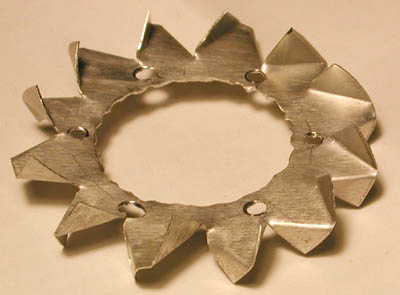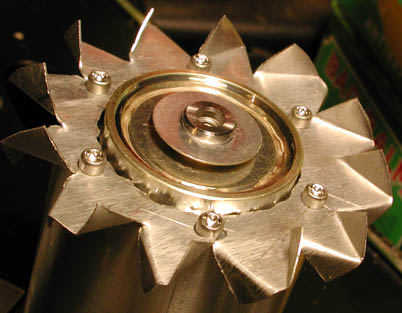Last fall before things froze up I was playing around with this as a rotor on a big hard drive motor. I figured that since I couldn't balance it, I'd keep the mass to a minimum and hope it was insignificant. This disk is about 2 inches in diameter, and I had it spinning up around 3000 RPM. It's made out of aluminum flashing. The weight didn't register on any scale I had access to.

I cut the disk and mounted it on the motor, then cut 12 radial slits with tin snips to sort of line up with the 6 screws on the motor. Then I bent one set of corners up and the other down. Water flies everywhere, but not much keeps on going staight ahead, so most of it gets slowed down. The jet of water is about 1/8 inch diameter.

I suppose this could be scaled up by using heavier aluminum. I didn't spend long making it as you can probably tell. Aluminum probably isn't the best material for use in water but it's light, and my Grumman aluminum canoe is holding up OK. The cooling fan on an alternator gave me the idea.
Alan